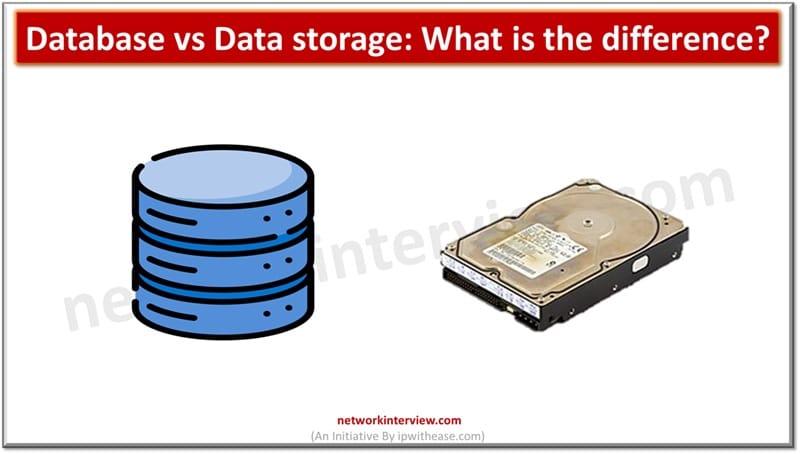
Database vs Data Storage: What is the difference?
Database is a structured collection of data managed by a database management system (DBMS) that supports querying, transactions, and indexing. Whereas, a data storage is a more general term for any system used to store and retrieve data, including databases, key-value stores, file systems, and more.
Data storage has been an integral part of the IT ecosystem since the earliest emergence of computer systems in mid-20 century. Initial days data storage was simpler, a basic file storage system housed inside the physical data centers. As technologies evolved the need for more refined methods of managing and information access grew. As the need for flexibility and scalability grew cloud storage took the precedence to handle structured data for analytical purposes and non-structured data such as NoSQL databases to accommodate flexibility required around images and audio files type of data.
In today’s article we understand and compare the difference between database and data storage, how databases and data storage work? Where to use a database or data storage and understand their key characteristics.
What is Database
Database is a structured data repository to provide storage, management and retrieval. Databases support various functions such as querying, indexing and transactions handling and are meant for applications which require organized and structured data which is quickly and easily accessible.
Some examples of databases are relational databases (MySQL, PostgreSQL) which use structured query language (SQL) for data management. Data is organized into tables and has a schema to ensure data integrity and relationships.
NoSQL databases (MongoDB, Cassandra) handle unstructured data efficiently with flexibility and scalability. MongoDB uses JSON to store documents and Cassandra uses a wide column store model.
Graph databases (Neo4J, Dgraph) store data as edges and nodes to represent entities and their relationships. Efficient queries with complex relationships and patterns are supported by them.
Characteristics of a Database
- Efficient management of storage
- Data integrity with enforced consistency and eliminating data duplication
- Handling large volumes of data
- Strong security features to support data integrity and protection
Related: Database and Data Warehouse
What is Data Storage
Data storage is meant for data retrieval and persistence. It is a repository to store, manage and retrieve data. There could be different types of data stores such as databases, file systems, key value stores and object stores. The choice of data storage type is determined by its performance, scalability and data structure. Data can be in structured format and organized into tables or an unstructured format such as NoSQL to handle large scale applications.
Characteristics of a Data Storage
- A digital repository to store and manage information.
- Datastore can be a network connected storage, distributed cloud storage, or virtual storage
- Can store both structured and unstructured data types
- Data distribution efficiently with high availability and fault tolerance
Comparison: Database vs Data Storage
Below table summarizes the difference between the two:
Parameters | Database | Data Storage |
| About | This is a particular type of data store used to manage structured data efficiently. All databases are data stores but vice versa is not true | Data storage is a border entity and may encompass different types of databases |
| Definition | Databases is a specific type of datastore which provides storage, management and retrieval. | Data storage comprises of different systems to store data such as file system, key value store, object store. |
| Data composition | Database always refers to structured data format and optimized for the storage, management and retrieval for structured data only | Data storage is a broader term and it can manage variety of data types such as documents , videos and audio files (considered semi-structured or un-structured) |
| Querying | Databases support sophisticated queries and transactions. SQL query is used perform complex operations on stored data | Data storage maps to object oriented and scripting languages and provides SQL type query language. |
| Scalability and flexibility | Databases support vertical scaling which means increasing CPU and processing power of single server or cluster. | Data storage support horizontal scaling and distribution of data across multiple nodes to handle large volumes of data. In terms of flexibility data storage support data modelling and let developers choose the right type of storage to address their needs. |
Download the comparison table: Database vs Data Storage
Tag:comparison, storage



